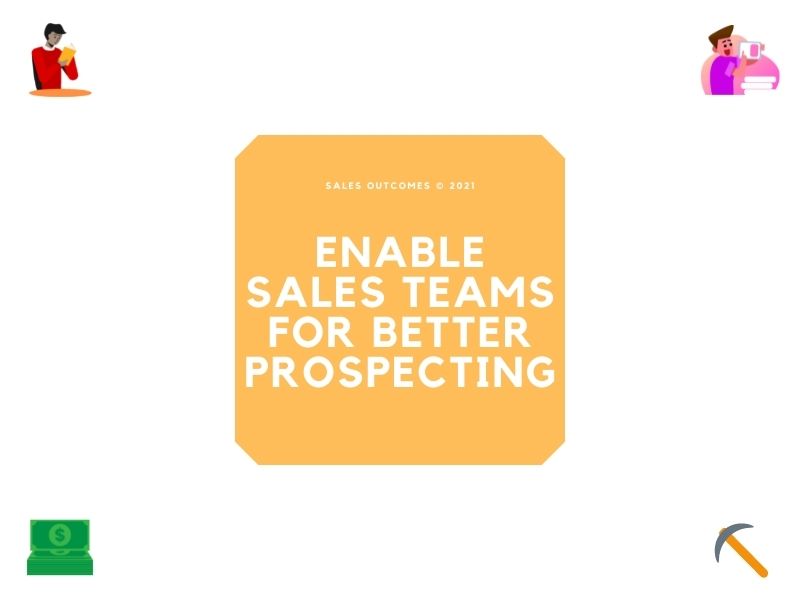Earlier this year, I wrote a post titled There Is No More Inside Sales to highlight that outside sales teams need to develop or strengthen their inside selling skills to succeed in virtual selling.
The dramatic shift to virtual selling is here to stay, and organizations need to enable sales teams to master prospecting skills.
If your organization identifies prospecting skills gaps within the sales team, consider the five steps to Prospecting Mastery to diagnose where to start.
Prospecting Mastery has five essential elements:
1. Targeting: The process of building and maintaining target lists and executing the sale motions to work the target list effectively
2. Research: Leveraging the cornucopia of internal and external resources to get smarter about the target company, target better, and engage faster.
3. Tools: The use and adoption of sales and marketing technology (e.g., CRM) to shorten the prospecting process timeline and improve prospecting effectiveness.
4. Outreach: The options to engage with a prospect and get the first appointment.
5. Integration: Sales motion best practices, tracking, and measurement to know if we are making progress.
The five Prospecting Mastery elements are linear and integrated. No aspect can stand on its own, and a missing part can scuttle the entire process.
The foundation for Prospecting Mastery is your company’s CRM. If your CRM is “not well,” salespeople are left to their methods, making tracking prospecting effectiveness practically impossible.
Here’s what’s needed in the CRM to help your sales teams down the Prospecting Mastery journey:
1. Target Segmentation: Without proper target account segmentation, you’ll only have random acts of targeting. Annual revenue range, employee range, number of locations, annual spend, and industry are essential segmentation criteria applied by most B2B firms. Whatever the ideal target account criteria that your organization adopts, you need to track it in the CRM.
2. Target Prioritization: We believe in an A, B, C, or similar prospect prioritization approach. There may be 100 “A” prospects, 200 “Bs,” and 500 “Cs,” for example. The precise number in each priority level is up to you, but salespeople tend to be more effective in prospecting if you give them fewer target prospects to pursue.
3. Prospecting Stages: Most processes have defined steps from beginning to end. Each of the prospecting process steps is similar to an Opportunity stage. You might start with Target Identified as prospecting step one. Then move on to Research as step two. Attempting to Contact as step three, and so on.
4. Activity Management: Tracking the prospecting sales motions helps salespeople and the organization understand what is working well and what areas of the prospecting process need attention. Many companies focus on tracking the number of call attempts and emails sent to gauge prospecting progress. It can be helpful to track the number of calls and emails, but not as beneficial as understanding whom salespeople are trying to contact and how are they doing it? Calling the CEO 50 times won’t mean much if the salesperson doesn’t have anything meaningful to offer the CEO in exchange for her time. Tracking meaningful interactions with relevant contacts is a better indicator of prospecting success than the number of calls made.
The virtual selling phenomenon is here to stay, which means a blend of virtual and in-person selling skills is needed for sales teams to accelerate growth.
The elements of Prospecting Mastery above provide a roadmap to enable sales teams for prospecting success. The company’s CRM delivers the foundation for the Prospecting Mastery journey.
A final word; Prospecting without the right sales enablement is hard to do, measure, and succeed.
If you have questions about your company’s Prospecting Mastery journey, click here to schedule time with me.
For more Tips on Enabling Sales Teams, Click Here to Subscribe to Two-Bullet-Tuesday





